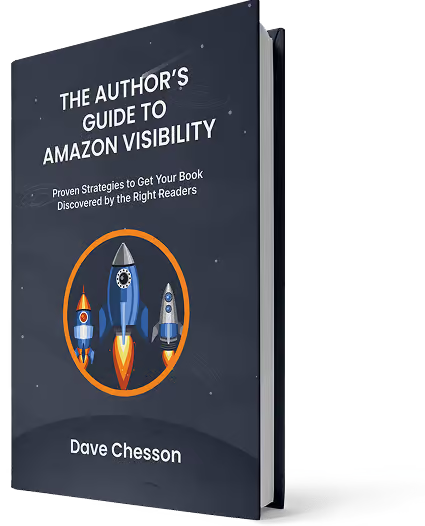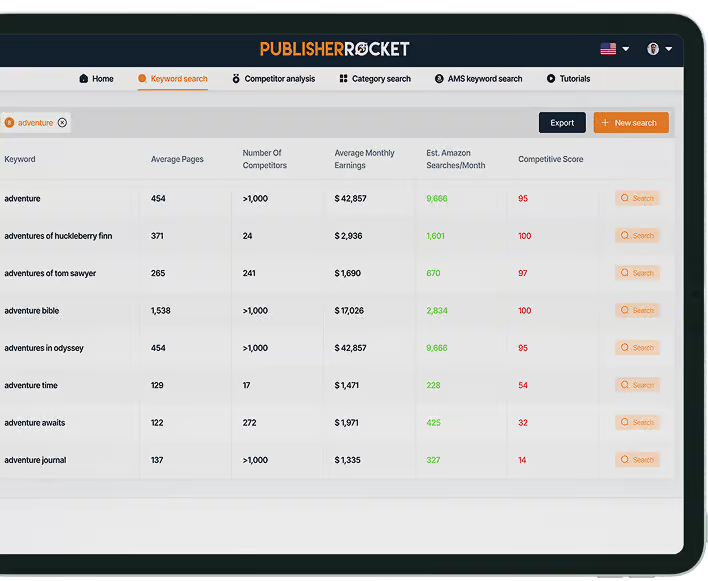No matter what kind of story you’re writing (a novel, short story, or screenplay), you’ll need to handle rising action.
Some writers may call it by another name, but it’s the same idea: the series of events that build tension and keep readers turning pages.
Rising action is the longest part of a story and a critical piece of plot development. Get it right, and your climax will feel earned. Get it wrong, and readers may lose interest before they reach the payoff.
In this guide, we’ll define rising action, look at examples, and cover how to write it effectively.
- What rising action is and where in your story it should come.
- Examples of rising action from well-known stories.
- Tips for making the best rising action section possible.
What is Rising Action? Definition and Location
Rising action is the longest section of most stories, sitting between the inciting incident and the climax. Some writers jokingly call it “the middle” (or “the muddle” when it gets messy).
This part of the plot is where tension builds.
The protagonist faces obstacles, makes choices, and encounters complications that drive the story forward. It’s also where readers become most invested, because the stakes keep rising with each new development.
If you’ve studied story structures like the Three Act Structure, the Five Act Structure, Freytag’s Pyramid, or the Fichtean Curve, you’ve already seen how rising action fits into all of them.
And even if you haven’t studied those models, you probably know the concept instinctively. Rising action is what keeps readers hooked after the story begins… it's the chain of events that makes them eager to see how it all ends.
Before we get into tips for writing it well, let’s look at some examples in action.
Identifying Rising Action
Rather than diving deep into one of the specific story models, let’s keep it simple with a broad breakdown of a typical plot:
- Introduction – Introduces the main character and their ordinary world, while providing necessary exposition.
- Inciting Incident – The event that disrupts that ordinary world and kicks off the conflict.
- Rising Action – The largest portion of the story, where the protagonist faces obstacles, makes choices, grows, meets allies and enemies, and pushes toward their goal.
- Climax – The highest point of tension, when the character must face their greatest challenge.
- Falling Action/Resolution – The conflict wraps up, loose ends are tied off, and the story closes.
In most cases, rising action takes up 60% to 80% of the narrative. That’s a lot of story to fill, and the challenge is keeping it engaging from beginning to end.
So how do you pull it off? The best way is to study examples of rising action done well, which is what we’ll look at next.
7 Great Rising Action Examples
1. The Lord of the Rings: The Fellowship of the Ring by J.R.R. Tolkien
The rising action begins when Frodo and Sam leave the Shire and carry the Ring into the wider world.
From that moment on, the journey grows increasingly dangerous, leading up to Boromir’s attempt to take the Ring. It's a turning point that forces Frodo to understand the true weight of his task.
If you look at the trilogy as a whole, the rising action could be seen as everything from leaving the Shire all the way to Frodo finally casting the Ring into Mount Doom.
2. The Tell-Tale Heart by Edgar Allan Poe
Here, the rising action begins when the narrator decides to kill the old man because of his “vulture eye.” The tension escalates as he stalks his victim, commits the murder, and hides the body under the floorboards.
It reaches its peak when the police arrive and the narrator becomes convinced he hears the dead man’s heart still beating, pushing him to confess.
3. Star Wars: A New Hope
After Luke discovers his aunt and uncle have been killed, he has no choice but to join Obi-Wan on his mission.
From that point, the rising action takes him into the heart of the Rebellion, with mounting battles and challenges. It culminates in the iconic Death Star trench run, where the story hits its climax.
4. Jane Eyre by Charlotte Brontë
In this classic, the rising action begins once Jane arrives at Thornfield Hall and begins working for Mr. Rochester.
Their relationship develops slowly, layered with mystery and tension. The rising action carries through to the dramatic revelation of Rochester’s existing marriage, Jane’s departure, and her eventual return after hearing his desperate call (setting up the novel’s resolution).
5. The Hunger Games by Suzanne Collins
The rising action starts once Katniss enters the arena.
Each new challenge (forming alliances, avoiding traps, and facing other tributes) raises the stakes. It builds steadily until the climactic standoff with Peeta as the Games come to their deadly conclusion.
6. Romeo and Juliet by William Shakespeare
The rising action begins when Romeo and Juliet meet and fall in love, despite the feud between their families.
Secret meetings, their hasty marriage, and escalating conflict with Tybalt keep the tension high, leading directly to the tragic turning point of the story.
7. The Great Gatsby by F. Scott Fitzgerald
The rising action unfolds as Nick is drawn deeper into Gatsby’s world. We watch Gatsby’s obsession with Daisy intensify, see their affair rekindled, and feel the tension grow between Gatsby, Tom, and Daisy.
This all builds until the explosive confrontation at the Plaza Hotel, which pushes the story toward its tragic climax.
How to Write a Rising Action Section
As you’ve seen, the rising action makes up the bulk of a story. It’s also where many writers lose steam, unsure how to keep things engaging while moving toward the climax. The good news? There are proven strategies to keep your middle from turning into a muddle.
Craft a Clear Goal
Your protagonist needs something to strive for. Without a clear goal, readers won’t know what’s driving the story forward. The goal doesn’t have to be complicated. It just has to matter to your character.
Some common examples include:
- Returning to a normal life
- Finding lasting love
- Defeating the villain
- Solving a mystery
- Protecting someone in danger
- Surviving against the odds
- Reaching a place of safety
- Achieving personal growth or enlightenment
Even a short story about buying milk at the store works better when the character has a clear objective.
A defined goal also clarifies the stakes: life, love, justice, survival, whatever is on the line.
Keep Raising the Stakes
Rising action should build pressure. Each choice your protagonist makes should create consequences, setbacks, or new obstacles. Small victories are fine — in fact, they give readers a chance to breathe — but those wins should always highlight the bigger challenges still ahead.
The key is escalation. Don’t make life easier for your character in the middle. Keep tightening the screws until the climax feels inevitable.
Develop Your Character
Plots draw readers in, but characters keep them invested. That’s why the rising action is the perfect place for character development. Your protagonist should be tested, forced to adapt, and pushed toward change.
They won’t always succeed. Sometimes they’ll react, sometimes they’ll take action that only makes things worse. But through those struggles, they learn. Watching them evolve is what makes the rising action compelling.
Put the Antagonist to Work
If your story has an antagonist, they should be a major force in the rising action. They may not face the protagonist head-on just yet, but their influence should be felt.
Whether they’re setting traps, creating setbacks, or staying one step ahead, the antagonist’s actions keep the protagonist off balance. This constant pressure builds momentum and ensures readers keep turning pages to see the showdown.
Vary the Pacing
Rising action doesn’t mean nonstop chaos. If every scene is cranked to maximum intensity, readers can burn out.
Mix in quieter moments (dialogue, reflection, or small successes) to give readers a breather. The contrast will make the high-stakes scenes hit even harder.
Use Subplots Wisely
The middle of a story is a great place to weave in subplots. A well-chosen subplot can deepen character relationships, echo the main theme, or raise the stakes in new ways.
Just make sure every subplot connects back to the main arc, so it strengthens the rising action instead of distracting from it.
Plant Seeds for the Climax
Think of the rising action as preparation for the finale.
The choices, mistakes, and lessons here should set up the big confrontation at the climax. By planting seeds early (skills learned, flaws revealed, relationships tested) you’ll make the ending feel earned and satisfying.
Final Word on Rising Action
You don’t need to follow a specific plot diagram to write a strong story, but you do need a compelling rising action. This is the heart of most narratives, and it’s where conflict and character growth should work hand in hand to keep readers engaged.
The protagonist’s goal should stay clear, the stakes should steadily increase, and the antagonist should continue to create obstacles that force hard choices. Those struggles are what drive change, and that change is what makes the climax satisfying.
If you can write a rising action that builds tension, deepens character, and keeps readers turning pages, you’ll have the foundation to carry the rest of the story arc with confidence.






